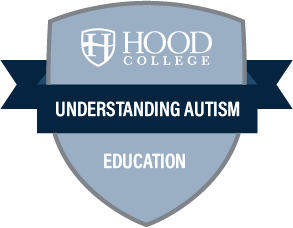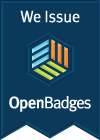Badge Overview
 Understanding Autism
Understanding Autism
Published Public {} Badge Class Data
Understanding Autism

Issued by Hood College
Badge Description
The Understanding Autism badge is designed to equip professionals with a comprehensive understanding of autism, from its historical foundations to the latest research on its causes and prevalence. Learners will explore the strengths and needs of individuals with autism, the experiences of their families and the impact of systemic supports. Emphasis will be placed on practical tools and inclusive strategies that enable children and adults with autism to thrive and meaningfully engage in the world around them.
Neurodiversity Awareness
Belonging Practices
Family and Community Engagement
Behavioral and Developmental Understanding
Badge Criteria
This FOUNDATIONAL level badge is equivalent to a 3-credit, master's level course. A final grade of B or better is required to earn this badge.
Aligned Outcomes
-
Internal
Core Competencies
https://www.hood.edu/offices-services/institutional-assessment/institutional-learning-outcomesGSO_CommCommunication
The badge earner will communicate clearly and effectively in oral, written and/or visual formats, consistent with the standards of their discipline.
-
Internal
Core Competencies
https://www.hood.edu/offices-services/institutional-assessment/institutional-learning-outcomesGSO_CriReasCritical Reasoning
The badge earner will approach content and tasks with a critical awareness, framed by knowledge and skills appropriate to their discipline.
-
Internal
Core Competencies
https://www.hood.edu/offices-services/institutional-assessment/institutional-learning-outcomesGSO_ProbSolvProblem Solving
The badge earner will apply advanced disciplinary content knowledge and strategies to understand and address problems and questions relevant to their discipline and to which they have not previously been introduced.
-
Internal
Core Competencies
https://www.hood.edu/offices-services/institutional-assessment/institutional-learning-outcomesGSO_DivDiversity
The badge earner will recognize and engage diverse ideas, perspectives and/or traditions that inform their discipline, profession and graduate experience.
-
Internal
Core Competencies
https://www.hood.edu/offices-services/institutional-assessment/institutional-learning-outcomesGSO_ProfProfessionalism
The badge earner will engage in legal, ethical and professional behaviors consistent with their discipline, including leadership, teamwork and/or other responsibilities to key stakeholders.
